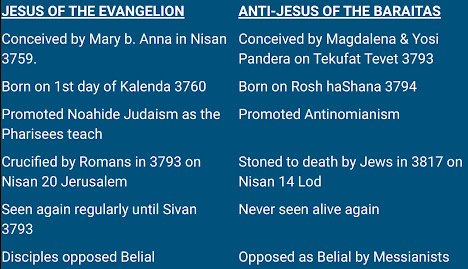Una Exposición del Nuevo Testamento
Either we ascend to the Heavenly Jerusalem through covenantal faithfulness,
or we descend into Gehenna by clinging to idols—whether land, race, or religion.
O ascendemos a la Jerusalén Celestial mediante la fidelidad al pacto,
o descendemos al Gehenna aferrándonos a ídolos
o descendemos al Gehenna aferrándonos a ídolos
—ya sea la tierra, la raza o la religión.
Pero él hablaba del templo de su cuerpo.
1. Jesús como el Verdadero Templo
Juan 2:19–21 “Destruid este templo, y en tres días lo levantaré.”
Jesús se identifica a sí mismo como el verdadero Templo.
Su muerte y resurrección reemplazan el antiguo sistema:
Él es el lugar de encuentro entre Dios y el hombre. Mateo 12:6
“Pues os digo que uno mayor que el templo está aquí.” Jesús es mayor que el Templo — cumpliendo su propósito.
⸻
2. Los Creyentes como el Templo
1 Corintios 3:16–17 ”¿No sabéis que sois templo de Dios y que el Espíritu de Dios mora en vosotros?” “Si alguno destruye el templo de Dios, Dios lo destruirá a él; porque el templo de Dios, que sois vosotros, es santo.”
1 Corintios 6:19 ”¿O ignoráis que vuestro cuerpo es templo del Espíritu Santo, que está en vosotros, el cual tenéis de Dios?”
2 Corintios 6:16 “Porque vosotros sois el templo del Dios viviente, como Dios dijo: Habitaré y andaré entre ellos, y seré su Dios, y ellos serán mi pueblo.”
Efesios 2:19–22 “Así que ya no sois extranjeros ni advenedizos, sino conciudadanos de los santos y miembros de la familia de Dios, edificados sobre el fundamento de los apóstoles y profetas, siendo la principal piedra del ángulo Jesucristo mismo, en quien todo el edificio, bien coordinado, va creciendo para ser un templo santo en el Señor.”
“En quien vosotros también sois juntamente edificados para morada de Dios en el Espíritu.”
Puntos clave:
Nosotros, los creyentes, somos corporativamente el Templo de Dios.
Estamos unidos a Cristo, la piedra angular.
El Espíritu mora en nosotros, como antes habitaba en el templo físico.
⸻
3. La Visión del Templo en Pedro
1 Pedro 2:4–5 “Acercándoos a él, piedra viva, desechada ciertamente por los hombres, mas para Dios escogida y preciosa, vosotros también, como piedras vivas, sed edificados como casa espiritual y sacerdocio santo, para ofrecer sacrificios espirituales aceptables a Dios por medio de Jesucristo.”
1 Pedro 2:4–5 “Acercándoos a él, piedra viva, desechada ciertamente por los hombres, mas para Dios escogida y preciosa, vosotros también, como piedras vivas, sed edificados como casa espiritual y sacerdocio santo, para ofrecer sacrificios espirituales aceptables a Dios por medio de Jesucristo.”
Apocalipsis 1:6 “Y nos hizo reyes y sacerdotes para Dios, su Padre.”
Puntos clave:
Somos piedras vivas que edifican una casa espiritual.Somos sacerdotes que ofrecen sacrificios espirituales (no sacrificios de animales).No se necesita reconstruir un templo físico — somos el templo espiritual.
⸻
4. La Visión Final: No Hay Templo en la Nueva Jerusalém
Apocalipsis 21:22 “Y no vi en ella templo; porque el Señor Dios Todopoderoso y el Cordero son su templo.”
Apocalipsis 21:22 “Y no vi en ella templo; porque el Señor Dios Todopoderoso y el Cordero son su templo.”
Puntos clave:
La meta final de la Biblia no es un templo de piedra reconstruido.
La presencia de Dios y del Cordero es el Templo.
La unión y presencia plena con Dios es la realidad final.
⸻
Problema con la Reconstrucción Futurista del Templo
El Nuevo Testamento enseña cumplimiento, no un regreso a tipos y sombras (Hebreos 8–10).
El Nuevo Testamento enseña cumplimiento, no un regreso a tipos y sombras (Hebreos 8–10).
Reconstruir un templo físico revierte la obra de Cristo.
Hebreos 9:11 dice que Cristo entró en el “tabernáculo más amplio y más perfecto, no hecho de manos.”
Edificar otro templo podría tentar a las personas a rechazar la obra finalizada del sacrificio de Jesús (Hebreos 6:6, Hebreos 10:29).
Por lo tanto, enfocarse en un templo físico futuro:
Distrae de la realidad de que ahora nosotros somos el templo.Devalúa el sacrificio único y suficiente de Jesús.Reintroduce una barrera entre Dios y el hombre que Jesús ya derribó (Mateo 27:51).
⸻
Exhortación Final
Hermanos y hermanas,
Hermanos y hermanas,
¡Ustedes son el Templo!
Jesús cumplió los tipos y las sombras; ahora vivimos en la realidad.
Estamos llamados a ofrecer nuestras vidas como sacrificios vivos y santos (Romanos 12:1-2), porque la presencia de Dios habita en nosotros ahora.
“Mas vosotros sois linaje escogido, real sacerdocio, nación santa, pueblo adquirido por Dios, para que anunciéis las virtudes de aquel que os llamó de las tinieblas a su luz admirable.” (1 Pedro 2:9)
Puntos clave:
Nosotros, los creyentes, somos corporativamente el Templo de Dios.Estamos unidos a Cristo, la piedra angular.El Espíritu mora en nosotros, como antes habitaba en el templo físico.







